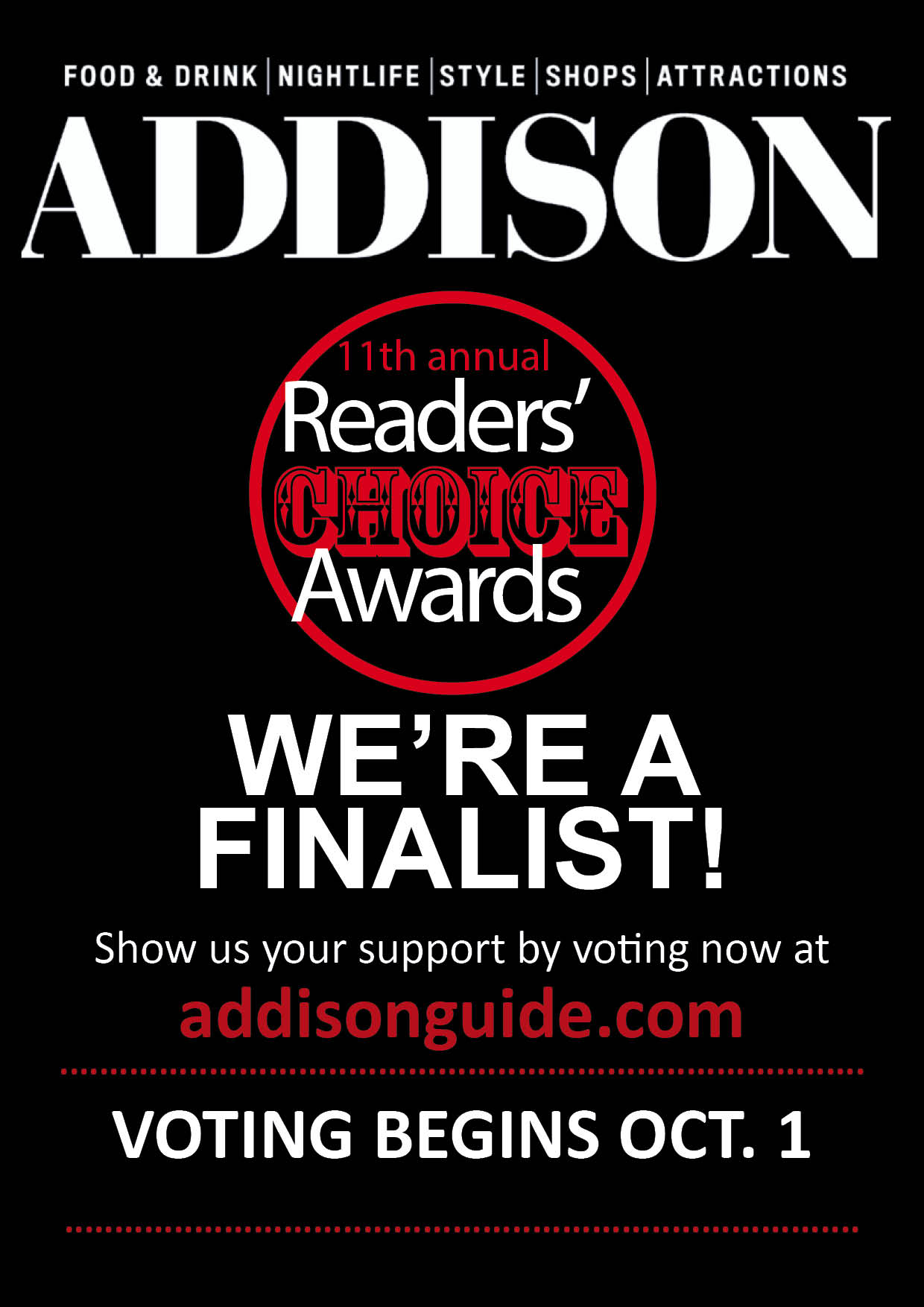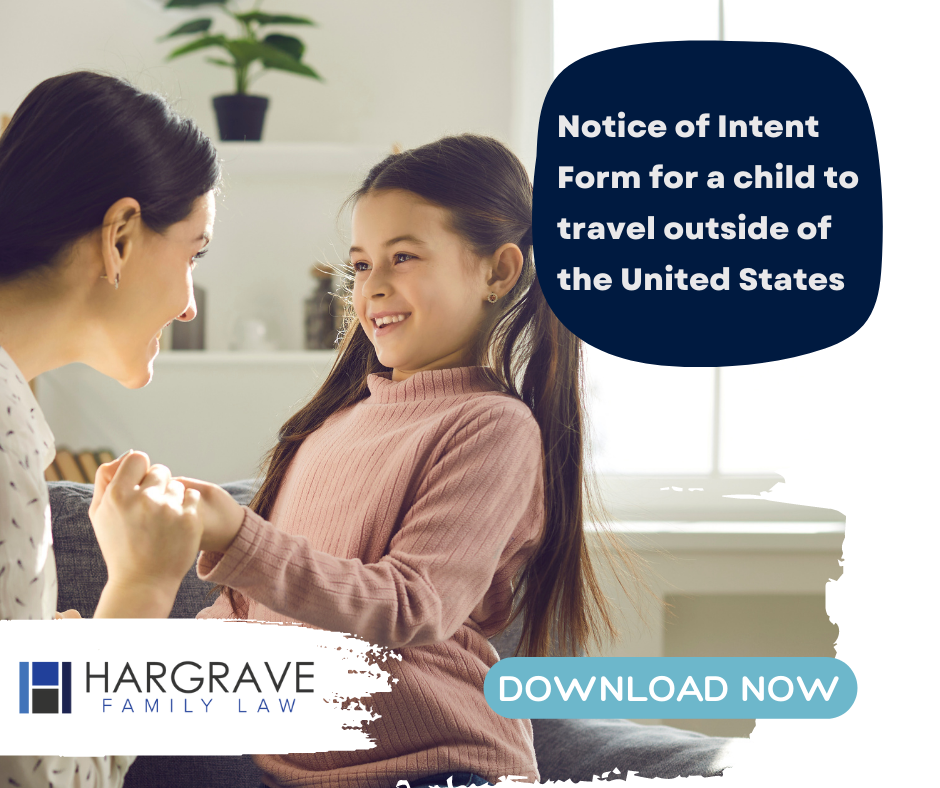The 3 Biggest Myths About Collaborative Divorce:
Collaborative Divorc Myth: Do you have to agree on everything?
Divorce is a challenging journey, often filled with disagreements and disputes between couples. It’s perfectly normal to have differences, and these differences don’t necessarily mean you have to head to court. Collaborative divorce offers a compassionate alternative. While some believe it’s only for those who agree on everything, that’s not the case. All you and your spouse need to agree on is the desire to try a collaborative approach.
In this process, you won’t face battles but will instead work together with a team of professionals who are dedicated to helping you find solutions. These professionals have an extensive set of tools at their dispossal. This team may include financial experts, empathetic mental health professionals to facilitate difficult conversations, and sometimes a child specialist if needed. Your attorney will be there to ensure your interests are safeguarded.
Every step in a collaborative divorce is taken in a structured, face-to-face manner, fostering communication and containment of conflicts. Meetings are built upon agreed-upon agendas and documented through minutes that accurately reflect your discussions and agreements. Each meeting builds upon the last, guiding you forward on this path of understanding and resolution. Remember, divorce doesn’t have to be synonymous with strife; it can also be a journey towards a more peaceful future.
Collaborative Divorc Myth: Collaborative Divorce is more expensive.
You might have come across the idea that collaborative divorce is costly due to the involvement of various experts. It’s essential to know that, in reality, collaborative divorce is usually more cost-effective than heading to court.
Traditional litigated divorce proceedings can be financially burdensome, involving significant expenditures in trial preparation. However, with a collaborative divorce, you can breathe easier knowing that you won’t have to worry about escalating legal fees associated with extensive trial preparations. Moreover, the beauty of collaborative divorce lies in its efficient use of professionals. While divorce lawyers are undoubtedly crucial, collaborative divorce teams leverage the expertise of other professionals, like financial experts and mental health professionals, to streamline the process.
By working together as a team, these experts reduce the time your divorce lawyers need to spend on your case, potentially saving you from substantial costs. It’s essential to remember that all divorces can have financial implications, but a collaborative divorce often offers you the chance to save not just money but also time and emotional turmoil when compared to the traditional litigated path.
Collaborative Divorc Myth: Traditional litigation protects my rights.
In a collaborative divorce, both you and your spouse are supported by individual attorneys who possess specialized expertise in family and divorce law, specifically trained in collaborative divorce proceedings. These dedicated attorneys utilize the law as a foundation to assist you and your spouse in discovering a legally binding resolution for your divorce. Additionally, they actively explore innovative and creative alternatives that are often inaccessible in traditional litigated divorces.
Check out our podcast busting down myths related to collaborative divorce
One of the great things about being a collaborative divorce attorney is getting to work with other fabulous divorce attorneys who are also committed to helping families find resolution in non-traditional, non-litigation ways. It is such a privilege to welcome Camille Milner. Camille is the owner of Camille Milner Law Firm which is located in Denton, and she practices in the Denton and surrounding counties. Camille was on the The Jennifer Hargrave Show to discuss Collaborative Divorce.
Jennifer Hargrave:
One of the first questions I want to ask you is, how did you find out about collaborative divorce?
Camille Milner:
Well, it sort of found me. I have been doing this for about 36 years, didn’t start out in family law, but eventually family law found me because there were people that needed what seemed to be my skill set. But all the years that I did family law until collaborative came, it was basically a court system. And every single time I took a family to court and had their division through the court system, I had this feeling that court is not a good fit for a family, a family divorce, or any sort of a family law resolution of a case.
Jennifer:
How did you learn about collaborative divorce?
Camille:
Well Stu Webb, the man that created it, came to Denton to do a training in, I believe, 1999. And I had not yet taken the board certification, so I wasn’t invited. But I heard about it. And I got my dander up and so the next year I took that board certification test to become board certified in family law because I wasn’t ever going to be left out from under the tent again. And as soon as I dug in and learn more about collaborative law, it was as if it were a kid glove that had been cut by pattern and sewn just for me. It had been what I had been looking for my entire life, a way to work through the legal system but have a heart for what the emotional side is that families in their children are going through. And collaborative is a perfect fit for that.
Jennifer:
One of the things I know that we love about collaborative divorce is its focus on helping families find resolution instead of exacerbating the problems.
Camille:
Right.
Jennifer:
You belong to a practice group, is that right?
Camille:
I do. It’s the Collaborative Divorce Denton County Practice Group.
Jennifer:
In fact, you brought a book that the group has put together. It’s a tremendous resource on helping families in the divorce process. What do you find to be the biggest benefit for your clients who choose to go through the collaborative divorce process?
Camille:
Well, that could be a really long all-day conversation, which is, by the way, one of my frustrations because when people drive down I-35 to Dallas, they’ll see a billboard that is Bankruptcy Divorce or DWI. And that has a brand that they immediately know. Collaborative divorce is a longer conversation and the benefits are limitless. By way of example, I’ll tell you about a family in just a few minutes, but one of the primary benefits is privacy. One of the other benefits is control. And really my favorite, the others are very important, but my favorite because I’ve got a couple of cases right now that weren’t opted in for collaborative and I get at for 36 years very impatient with the inefficiency. In a collaborative case, you have neutral professionals in addition to each side of having their own lawyer. And with the collaborative professional that deals with the communication and the family issues, this is somebody that has at least a master’s degree and licensure from the state of Texas to be a mental health professional. Now, they have that licensure, but they’re not doing therapy in the room. What they’re bringing to the table is their skill set to help people understand communication skills that will keep the negotiations going, because if there’s ever a No, that stops negotiations cold.
So what they train these people to do is say, well I can’t really do that but how about this? And so we continue evolving what the options might be until these people come up with an option that they find satisfactory, and that maybe on the children’s issues. Or the other professional that’s the neutral in the room is the financial professional. And that person, it’s just a wealth of knowledge that they give this family. They help them compile a joint inventory of all their assets and all their liabilities, and then they help them learn how to do a post-divorce budget so that not only are they going to resolve their case in a few months, but they will be on solid ground to start their future for themselves and their children in a very financially healthy way.
Jennifer:
I love when you mentioned when you found collaborative, it was just like finding a pair of kid gloves. And I think for families, it really is a way to uniquely tailor the solution to their family. It’s not a one-size-fits-all solution like you get at the courthouse, right?
Camille:
Absolutely. And sometimes I feel the tendency to pick on judges and get frustrated with them because they… but then when I think about it that’s really unfair. They have maybe four hours to learn all about this family and all the details of their assets and liabilities. That’s beyond human. No one can do that. And so I think the judges should be our greatest supporters because we lower the number of cases that they have to hear. And that way, their time can be limited to the ones that are just impossible to resolve any other way.
Jennifer:
So often one of the great benefits of collaborative really comes after the collaborative divorce case is over, too, because we don’t have to keep going back to take up the judge’s time. Another reason the judges should be supporting it, right?
Camille:
What I have found– and Austin does this a little bit different than the North Texas area– but in the north Texas area, we don’t even usually have to have the client sign a collaborative agreement or settlement agreement, like a mediation agreement, because by the time they get to the point that they’re ready to say we’re good, they have worked through all the options and all the possible consequences of each of those options to where they may come back in a couple of weeks after they’ve reached an agreement after we’ve done the decree. And they may want to tweak a couple of little things, but it’s usually a durable agreement that will last often till the kids are grown and then beyond.
And if I can just add that one piece, one of the things that some of our collaborative clients do is send a letter to extended family and friends and say, “We want you all to know we are still a family, we’re working through this as adults and together with compassion and respect and we don’t want you to ever feel like you have to take a side. Please don’t ever say anything bad about the other person to anybody, or to us, or to our children, certainly not in the presence of our children. And we want our relationships with you to go forward after this is over.” And I have had clients that actually say, “Can we send a letter like that out to our family and friends?” And they said when their family and friends got it, they said this huge sigh of relief came on them because they knew the relationships could be protected and preserved, and that meant just a great deal.
Jennifer:
It is so important, especially for the children and the extended family and cousins and aunts and uncles, I know how important that is.
Camille:
Because they’re going to have times that they have to get together, whether it’s weddings, receptions for engagements, graduations, and sadly, even funerals. And I know of one family who was so estranged, it was obviously not a collaborative divorce. And when their child was killed in a car wreck, the mother’s house was where everybody gathered and the father’s family and the father were put out on the patio. They weren’t even allowed to come into the house. I mean, that’s just heartbreaking and, of course, that family will never be reconciled.
Jennifer:
Never.
Camille:
It’s going to be for generations that those kids have been wounded and scarred by that.
Jennifer:
You know, you raise an interesting point because one of the things that we know is how a contentious divorce impacts not just the parents going through the divorce but it does carry on in the children and it will impact their ideas about marriage and family and their ability to have successful relationships in the future.
Camille:
One of the things outside of my clients is this may be your greatest teaching moment. A lot of people get so… they succumb to their own pain to the point that they forget that this is one of the greatest opportunities of their lives. Sadly, statistically, half of the people that will get married will be divorced. So if parents can show their children how to do this compassionately and respectfully, and some people say even lovingly for a transition like this, then it’s much more likely their kids won’t be spooked by marriage. And if they get married, their relationships will be healthier because the parents modeled that for them.
Jennifer:
One of the benefits you stated right at the beginning was privacy. And, you know, I think it’s interesting people don’t realize that courts are a public forum. And right now, even though everything is pretty much shut down, I mean people aren’t going to in-person court, most of the time there are some hearings that are happening. The cases are being broadcast on YouTube.
Camille:
It’s crazy. Yeah, there is no privacy and it’s worse now than ever. I mean, the entire divorce system is nothing other than the Kardashians’ real-life program, now that it’s on YouTube. I mean, it really is heartbreaking, and it’s heartbreaking because people don’t realize what they’re giving up by going into the court system for the judge to make decisions for them rather than themselves.
Jennifer:
Exactly. I mean, it is important. It’s an important tenet of our legal system that the courtrooms are public. But, you know, it was one thing when people had to drive to the courthouse and find parking and actually go in and sit in a courtroom, and now you can in your living room tune in on YouTube.
Camille:
Yes. And so in a town like the size of Denton where there are still… Denton has gotten very much larger but a lot of people still know each other. And so anyway that your dirty laundry is thrown out in court, the public can know. And, I mean, your children may know. They may hear about it at school from their friends who heard about it from their parents. And it’s also unnecessary.
Jennifer:
It really is. And so people may not know but in collaborative, we are meeting in private sessions that there is no court reporter, there is no judge, and in fact, the whole process is actually protected. Which brings me to the next point that you and I were discussing which is some of the popular myths about collaborative divorce. And we’ve just talked about the benefits, it sounds awesome. Why isn’t everybody doing it? And we ask ourselves the same question, but we do know that there are some common misunderstandings about the collaborative divorce process. So I want to ask you to share with us, you know, some of your your favorite myths that you hear because we’re going to be myth busters today.
The Collaborative Divorce Process works with trained legal professionals
Camille:
Okay, great, myth busters. Well, one of the most common misconceptions are, I think, sadly in the public domain by lawyers and maybe clients that don’t know any different is that if you go into a collaborative process and it doesn’t work, you have to leave the process, get new lawyers and start all over. Well, that’s just not true at all. You want to go into the collaborative process with a lawyer and with professionals that are very well trained and experienced because people that just do this because it’s available in the statute with no training or experience, yeah, sometimes those cases are going to opt out because it’s not done correctly. It’s not done with the support that truly experienced and trained collaborative professionals can offer.
When we’re able to do that, I mean, the people that I know, the people that are in the practice groups that I know, the number of cases that opt out are very, very small. And it’s usually when the clients often want to go into it even if the lawyers and the professionals are saying, “I’m not sure this is a good fit for you”; but I’ve actually had some that said, “No, we can do this.” And sometimes they’re able to and sometimes not. If there’s a personality disorder, one of the things that I have seen with people that have borderline personality disorder is those are folks that sometimes can never make a decision for whatever reason and I won’t go into the psychology of it. I am familiar with some of it but I’m not an expert on that. Those people may be that narrow group that have to have a judge decide, and it’s probably something within their core that keeps them from being confident in what they’re deciding. They’re always afraid there’s going to be something left on the table. Or if there is untreated alcoholism or other addictions, or severe depression that’s untreated, all of those can be managed. And I’ve had collaborative cases with all of those issues and they’ve been managed and gone through very well.
And then finally one that is problematic is when there’s family violence, but that again can be managed. Ours is the only process in Texas where we have a mandate to inquire about family violence before we can enter into the collaborative process and we are mandated to ask them if that’s occurred and if there are reasonable ways that they can help us think of to protect them. Even something as unrecognizable as a wink from the client who was the victim to their lawyer saying the other person is doing the thing that no one else sees but it’s an intimidation technique that they have on me. And I will just quote one of our dear friends who is now deceased and one of our pioneers in collaborative law and that’s Gay Cox. And when we were developing in 2011, there was what’s called the Uniform Collaborative Law Act, which is a group across the country that tries to make all the states’ laws uniform. And Texas was adopting that and adapting it for Texas and there was a big discussion about the family violence question and whether or not the family violence victims lobby would support us because we’re not at the courthouse, we don’t have sheriff’s deputies at the door.
And our group met with Chris Algart, one of our leaders in Austin met with the collaborative, excuse me, with the family violence lobby, and what they developed is just incredible. We have a screening tool that we go through and so we know what’s going on, whereas, I’m venturing to guess this is not in any other type of law that goes into the courthouse. So our good friend Gay Cox, who I said is deceased, was a big proponent of that because she said she had a case where a lady client said, “I want to go into collaborative” and she had reservations about it because she’d been a victim of family violence. And the lady said, “You don’t understand. This is the only way I will survive. If we go to court, it will heighten his animosity toward me and he will kill me and possibly our children.” That’s very chilling to me.
Jennifer:
It is very chilling and I think it just brings home the fact that when we’re not in a collaborative arena, when we’re in a litigation, more of a traditional arena, oftentimes it just exacerbates and heightens the levels of conflict to a dangerous level.
Camille:
It does.
Jennifer:
And I think, you know, not every attorney is trained to deal with some of these very difficult issues in collaborative, but some are and some do an amazing job.
Camille:
Yes.
Jennifer:
And I think we need to keep an open mind because it can be the resource for people even in very difficult marriages, as we bring it to an end.
Camille:
Yes, and that goes to one of the fundamental differences. The court system is what is called position-based. And in every system, there are rules. And in the court system, there has to be, it may not be called declared winner and loser, but that’s in effect what it is. And the only way to prevail is you get up and you say the worst things and bring up the worst evidence against the other side so that you get what you want. Well, it destroys families, in my opinion. And in collaborative, it is interest-based, which was developed by the Harvard Negotiation project, and it’s a whole different system where what both clients look at is what are their goals and interests. And somehow, when we work together, we seem to be able to meet almost all their goals and interests that may be adjusted a little bit. But at the end of the day, no one’s going to leave a collaborative meeting or collaborative case without an agreement because if they don’t agree, they don’t have to stay in it. So they’ve got ultimate control, and it’s just a function of their creativity and their willingness to continue looking and thinking and listening and talking.
Jennifer:
I think the question I always ask is, what do you want your focus to be? Do you want to be on the past and all the bad things that were done where you both try and smear each other, or do you want your focus to be on building your future? Right?
Camille:
Yes, yes.
Jennifer:
Okay. So you said that the myth is that you have to withdraw or if it doesn’t settle, then the whole process just goes out the window. There is a truth in that in that and we can talk, I think it is important to talk about that, that parties in collaborative don’t get to threaten to just go down to the courthouse. We all make a commitment. The parties and the attorneys and the other professionals, that we are here to help them resolve it in the collaborative process. And what is that really designed to do? Why do we make that commitment?
Camille:
Well, it’s a couple of different things. I’m going to date myself when I talk about LA law, the program from the 80s where it was…
Jennifer:
That’s why I went to law school.
Collaborative Divorce is all about problem-solving
Camille:
Because of Arnie Becker in LA Law. And there is this stigma that a lot of litigating lawyers want to feel the fire because their clock is still running and they make more money on that. I personally don’t think family lawyers have ever been that way, but there is that stigma. And so what the collaborative process, by having that disqualification provision in there, does is it takes that incentive away from keeping the fire going. If we start threatening and into the collaborative case, we lose our jobs. And if we are trained in how to help them problem-solve and resolve their issues without court, there’s not any reason why that should happen. So the clients are not allowed to threaten to go to court, or to go to court for anything and the lawyers are not. And so what that ends up meaning is that sometimes when things, and what really… I’m not going to say amuses me, but I find interesting is a lot of even our colleagues and judges think this is just a tea party where we sit around in nicey-nice and Kumbaya. This is very difficult work, emotions get heightened. But what happens is, because we have a trained mental health professional in the room who is a communications expert, they’re there and help us manage those emotions because you’re always going to have emotions. And when people get shot, it’s because those emotions have just been like a volcano, whereas they can be managed. And so what happens in the collaborative process is, sometimes, when we’re doing this really hard work because these are difficult questions, we have to take a break in maybe five minutes, maybe 15, maybe a day, maybe a week. But inevitably, when we take that break, everybody sort of decompress and calms down. And then we come back with a fresh mind and we’re able to work through those difficult questions with the fresh start. And it almost always works.
Jennifer:
It does. So it is true that the lawyers have to resign if the parties in the unlikely event, and it is unlikely. I mean, I think the odds are that the case will end up settling.
Camille:
Right.
Jennifer:
But the lawyers do have to resign if the parties ultimately decide to go to litigation.
Camille:
And the other reason for that is so that nothing that they have heard in the joint meetings can then be used against the other party. You want everybody to feel free to speak their truth, their heart, and know that it will be like in a mediation that no one will ever be able to to use that against them later on.
Jennifer:
So that collaborative commitment does two things. It makes sure everybody is invested in the process and it also protects the clients and the integrity of the process and what they’re going through, because we do ask them to come to the table with full disclosure. The reason why it’s a myth is because, well, I mean, most cases don’t ever opt out. It really doesn’t become an issue. And collaborative professionals have so many tools in the toolbox. So it isn’t just that if your case doesn’t settle, you have to go to court. If your case doesn’t settle, you can go to mediation.
Camille:
Right.
Jennifer:
If your case doesn’t settle, we can bring in some other professionals to help work through the issues, so.
Camille:
Right. And in the end, even when you have to do the mediation or bring in those other professionals, it is almost always cheaper than a litigated case.
Jennifer:
All right. So that brings us to our next myth that collaborative divorce is more costly. Talk to us about that one.
Camille:
All right. Well, you and I both know, and everybody in our business knows, if you go to court, it’s going to be expensive. I don’t know exactly what it is in Dallas, but it wouldn’t be unusual just if you go to court for the case to cost fifty to a hundred thousand dollars. And that’s for middle-class people, not people that have high wealth.
Jennifer:
Per side?
Camille:
Yes, it can be per side. And that’s just, oh my gosh, how many college educations would that help pay, or therapy for the kids?
Jennifer:
Family vacations. And I always think there’s a lot more fun ways to spend your money than spending it on legal basis.
Camille:
There are. And what really saddens me is when there’s that connotation that the lawyers got all the money. The lawyers aren’t the ones that push this to trial. It’s the clients that make that decision. Sometimes the other side is so unreasonable that your client may not feel like they have a choice. But still, it’s the clients that drive that. So, one of the most inexpensive options or maybe the most inexpensive option is what is called kitchen table, and that’s what a lot of people would like to do in a perfect world. But being that the world is what it is, divorce decrees now, if you have children and any property really to speak of it all, are about 50 pages. And that’s not just lawyers trying to keep the clock running. That’s because we don’t want courts to have to continue to hear modifications and disputes between parents. So the detail of the parenting time and who makes what decisions and health insurance, all those details take about 25 to 30 pages. And that’s all so that the clients will never have to darken the door of the courthouse again. We try to make it as specific as we can. So if you got kids, it’s very difficult to do a kitchen table agreement because people just, I mean, I don’t know how to replace a toilet so a plumber would probably not know how to do a divorce. That’s just not something that’s in most people’s toolbox walking down the street.
On the property part of it, if all you’ve got is a couple of cars, maybe some bank accounts, it maybe that you can sit down at the kitchen table and figure it out and then take your agreement to lawyers and let them do the paperwork on it, and that’s fine. And we want everybody to do that if they would like to, and they can sometimes even do it completely on their own, and that’s great. But one of the things that I have seen that so troubling is people get in the quicksand of their property agreements and they don’t realize the complexity of it. The best example I can think of is in most middle to upper class people’s lives now, their largest asset may be their retirement. Well, we have a whole expert named Raechel Parolisi, who is in the North Dallas area, that has spent 20 years working in Benefits and has not only a law degree but a master of laws degree in Benefits. And what she minds and uncovers that are the distinctions we need to put in decrees so that people are getting what they think they’re getting is amazing. I’m always just dazzled by her. And I know that a lot of lawyers that don’t do collaborative work, they kind of use a wide brush on the biggest assets, and 20 years down the road that can be a problem.
Jennifer:
Exactly.
Camille:
And selling their house– if they’re doing that and they don’t set up in the decree who’s going to pay the bills while it’s selling, who’s going to set the price, who’s going to pay for the repairs while it’s selling– again, all that can cause conflict later on down the road for which they will have to seek court intervention and additional cost. So what we do in the collaborative process is we have these two neutral professionals and we have an organizational meeting and then we send them off with those two neutrals. And very often they come back with the inventory that we talked about in budgets, and then the parenting plan already pretty much agreed to because they’ve worked with them offline. And then we come back together and we earn[?] out at the details, and is it going to be $2,500? No. But is it going to be a very great value to this family? And so many ways beyond just the money.
And one of my favorite financial professionals, Steve Walker, sometimes says people don’t think nowadays; they don’t give a second thought to going and spending 20 to 25 thousand dollars on a car. It’s giving you security, your safe transportation, reliable transportation. And so when we think about if a collaborative case with all these bells and whistles for both sides, together cost 20 to 25 thousand dollars, but it resolved everything, you felt you never had to go back to court, and your kids are in good shape, and your extended family’s in good shape, and you’re in good shape. Wow, that’s a pretty good return on that investment.
Jennifer:
I love that, that is great. You know, what I’m thinking in my head as you’re talking through that is the mind’s filled of issues that people don’t even know exist, like taxes, and how do you tax the fact. And the thing is, they don’t need to know all of that. They’re not supposed to have a law degree in the process. But when you’re working with a team of advisors, you really get to explore all of those issues in a constructive way.




























